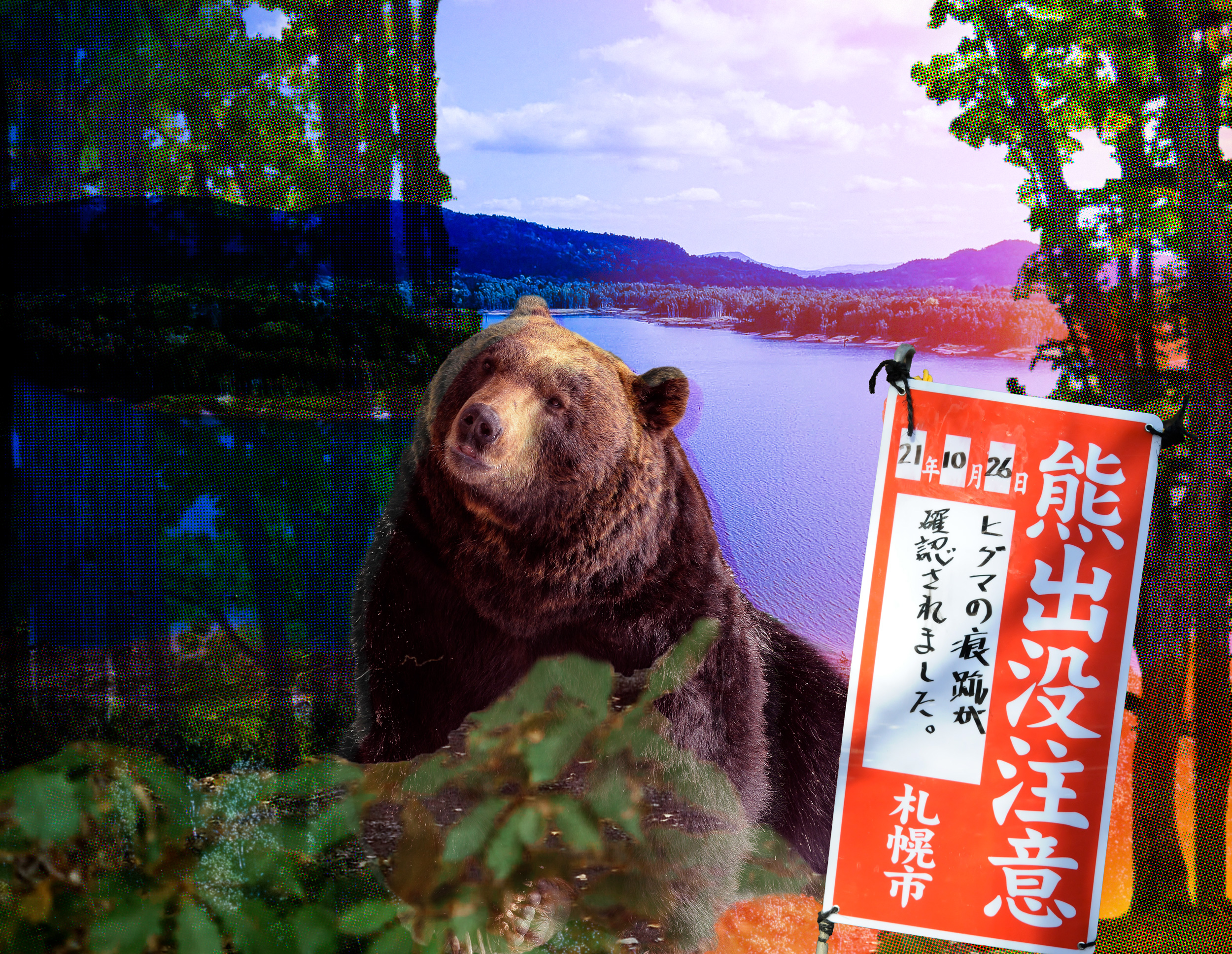Issue:
June 2023 | Letter from Hokkaido
Changes in environment and ursine behaviour mean residents and visitors must exercise caution

A bear attack last month on an angler at Hokkaido’s Lake Shumarinai made local and national headlines. An eyewitness reported seeing a bear near the lake with waders in its mouth, and a human head was found in the area. Toshihiro Nishikawa, 54, who had been fishing for rare Sakhalin taimen in the lake, was still missing as this letter went to press.
The attack shocked the Tokyo-based media, with TV networks and social media offering breathless coverage. Video editors and web managers scrambled to beg, borrow, or commission photos and smart phone video shots of Hokkaido bears running through fields, walking through city streets, or putting their paws on top of stopped cars and looking inside at their terrified passengers. A few historically minded editors and producers used the attack to remind readers and viewers of Japan’s most deadly incident involving an animal in recorded history: a 1915 attack on a small remote Hokkaido village by a 2.7 meter, 340 kilogram bear that left nine people dead.
The Lake Shumarinai incident reminded everyone that, cute as they may look, Hokkaido bears can be fearsome creatures. Now that tourists are returning to Hokkaido in droves, and because a lot of them are from Tokyo or Asian megacities where bear sightings are restricted to Paddington or Winnie the Pooh cuddly toys, local authorities are worried.
Hokkaido is home to an estimated 11,700 bears – more than double the 5,200 counted in 1990. Mountain vegetable and mushroom gatherers who venture out in early spring, when bears emerge from hibernation, and in the early autumn, as they prepare for winter, are especially vulnerable. Half of all bear attacks in Hokkaido involve people foraging in mountain or wooded areas. By contrast, only 3% of attacks occur when people are fishing.
Officials are worried about Hokkaido’s bears for several reasons. The population of farmers is aging and declining, and bears are becoming bolder as they move about and have fewer encounters with humans.
Abandoned farms in many parts of the prefecture still have plenty of things that bears like to eat. And with fewer humans chasing them away from crops - or shooting them – the emboldened animals are less hesitant about venturing into areas that they once avoided.
At the same time, parts of Hokkaido that are undergoing rapid development, including the area around Chitose airport and the ski report of Niseko, are at a greater risk of deadly encounters between bears and people, as office buildings, hotel resorts, chalets, houses, and shops are built in areas that are historically home to bear populations. Several officials have told me it is nothing short of a miracle that more people haven’t been injured, or even killed. But unless a balance is struck that accommodates both humans and bears, deadly incidents are certain to increase.
Officials are quick to remind residents and visitors of what to do should they encounter a bear in Hokkaido. They are told to carry bear spray and a whistle when out on hiking trails, and to try to avoid venturing into remote areas alone in the early morning or late afternoon, when bears tend to be moving about more. Hikers should clap their hands regularly and make a lot of noise to drive bears away. And use common sense: even in designated park areas with benches, people need to be aware of their surroundings and the potential dangers.
While it’s tempting to lower your guard in downtown Sapporo, here, too, it is a good idea to exercise caution. The southern part of the city is highly urbanized with a dense human population, but bear sightings are not uncommon. Video footage of a bear attacking a pedestrian on a Sapporo street a couple years ago went viral and demonstrated that, no matter where you are in Hokkaido, you need to be careful.
I am often asked whether all this talk of bear attacks might be over the top – or even fear mongering. I would say no. It’s true that the vast majority of visitors to Hokkaido will never encounter a bear, unless they really go out of their way to find one. Most residents of Sapporo have never seen one, except in a zoo.
But anyone who grew up, as I did, in a part of the world where bears are not uncommon learns to appreciate that for all of its beauty, nature can be merciless. Even the most cautious and experienced woodsman or woman is unable to predict when they’ll run across a bear.
If all of the warnings and news reports about bear attacks make just one person walking through the woods of Hokkaido a little afraid, and if that fear leads to caution and respect for their surroundings, then so much the better. For humans, of course, but also for the bears.
Eric Johnston is the Senior National Correspondent for the Japan Times. Views expressed within are his own and do not necessarily reflect those of the Japan Times.

